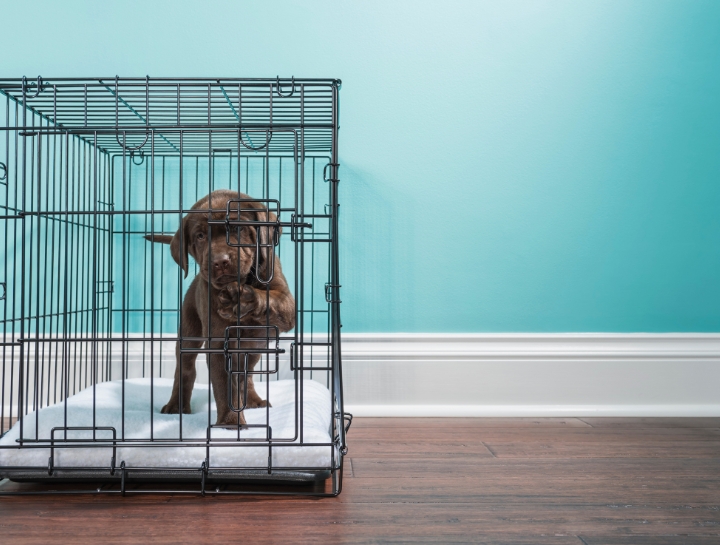Crate Training Your New Puppy or Dog

We are big fans of confining puppies and newly adopted dogs to a crate. The crate should be a comfortable and relaxing place. Using a crate when you can’t observe the new family member helps with housetraining and keeps them safe.
In addition to crates, an exercise pen or baby gate can be used to confine your new dog. You may find you need several spaces set up around the house. Be sure to make the space comfortable and safe for them and include safe toys and things to chew on. For housetraining, the space should be big enough for them to stand and lie down comfortably but not so large that they can eliminate in an area far from the bed.
If your new addition isn’t used to a crate, you will need to spend a few days training them. The goal is that they accept the crate as a great place so we don’t want to put them in the crate and leave them crying. Instead, prop the door open and throw treats inside. Encourage your dog to find the treats. Repeat this several times a day and reward them with treats when they go in on their own. It is best to do frequent but short training sessions.
Be sure to take baby steps in acclimating your pet to the crate with a closed door. Start with a tired puppy who has already been outside to eliminate. Stay close by and start by throwing treats into the crate and closing the door for just a few seconds. As they accept this you can close the door for longer periods of time with you there. If they are doing well, try leaving the room for a few seconds and come back with treats for a reward. The goal is to return before they get upset. If the puppy starts crying, come back and try again being gone for a shorter time. If they continue to cry, let them out of the crate and try again later.
Most dogs acclimate well to confinement. They still need to get out of the crate as frequently as possible for supervised exercise, time to eliminate, and socialization. Keeping your dog with you on a leash even in the house is one way to give them time out of the crate and ensure great observation.
Like all training, this takes time and patience. It is well worth the effort at home and when your dog needs to be in a crate away from home, like at the animal hospital, doggie daycare, or the kennel.
At Earlysville Animal Hospital, we see every day that the crate-trained patients are much happier and less stressed when they need to stay with us. Since our goal is always to decrease our patients' stress and anxiety we think crate training is fabulous.
